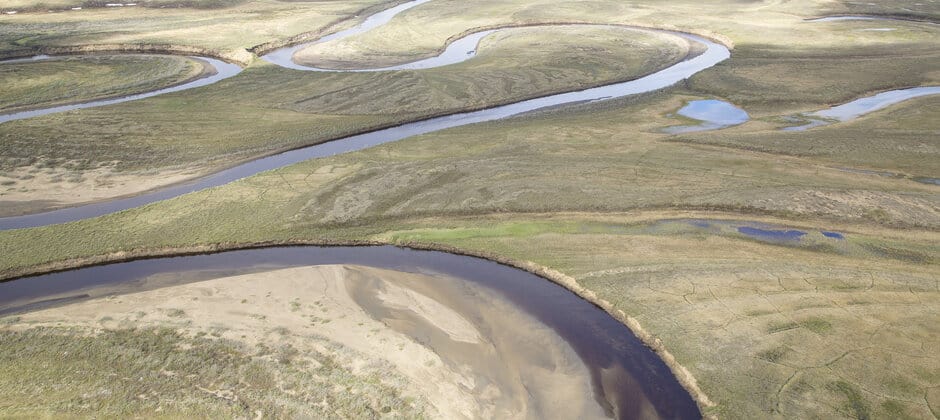Share this article
Energy development in Alaska reserves moves forward
The Bureau of Land Management officially opened more of the National Petroleum Reserve-Alaska to oil and gas development earlier this month, releasing the final Integrated Activity Plan for the reserve.
Under the new plan, 82% of the reserve — or 18.6 million acres — will be opened for oil and gas development. Approximately 4.3 million acres will remain closed to new infrastructure. Previously, about half of the NPR-A was open to development.
The Wildlife Society wrote to the Department of the Interior when the BLM began its review of the management plan for the NPR-A in early 2018. In the letter, TWS noted that the NPR-A is home to iconic wildlife populations, including two of Alaska’s large caribou herds, millions of migratory birds, globally significant densities of raptors and large concentrations of marine mammals, including beluga whales (Delphinapterus leucas), polar bears (Ursus maritimus), spotted seal (Phoca largha) and walrus (Odobenus rosmarus).
The Wildlife Society called on the BLM to protect important wildlife habitat on NPR-A, noting that “arctic ecosystems are particularly susceptible to disturbance because their biological diversity and net biological productivity are low and climate change is placing additional stress on these systems … Thus, development of a petroleum industry in arctic regions must be implemented carefully to avoid or minimize rapid and perhaps irreparable damage to these unique and easily disrupted ecosystems.”
The Wildlife Society also requested that the BLM extend maximum protections to several special areas, including the Teshekpuk Lake Special Area, one of the most valuable wetland complexes within the reserve. It supports tens of thousands of waterfowl during their flightless molt and has the highest documented density of nesting shorebirds anywhere on Alaska’s North Slope — an area that extends across the northern coast to include portions of the Arctic National Wildlife Refuge. Under the new plan, the entire Teshekpuk Lake Special Area will be available for leasing, with some limitations and stipulations regarding timing and surface occupancy.
Soon after this month’s NPR-A announcement, the BLM held a long-awaited lease sale in the Arctic National Wildlife Refuge. The sale, along the refuge’s ecologically significant 1.6 million-acre coastal plain, yielded fewer than expected bidders, with bids on only 11 of the 22 sections offered for sale. Only three entities participated in the bidding, and one of them, an Alaska state agency, was the sole bidder in all but two of the leases. Overall, the sale brought in about $14 million — half of which will go to the state of Alaska.
Also last week, the comment period closed on a U.S. Fish and Wildlife Service proposal that would authorize the Kaktovik Iñupiat Corporation to take by harassment small numbers of polar bears during three-dimensional seismic surveys and associated activities this year in the Marsh Creek East Program Area of the Arctic Refuge. The surveys are an effort to determine the size and location of underground oil and gas reserves. The proposal drew numerous public comments, many expressing concern about the effect of the surveys on polar bears and the fragile Arctic ecosystem.
Last year, a similar request to conduct 3D seismic surveys was blocked by the BLM, based on the possibility of negative impacts on polar bears and tundra habitat.
Read TWS’ position statements on energy development and land management.
Header Image: Under a new plan, 18.6 million more acres in the National-Petroleum Reserve-Alaska will be opened to energy development. Credit: Bob Wick/BLM








